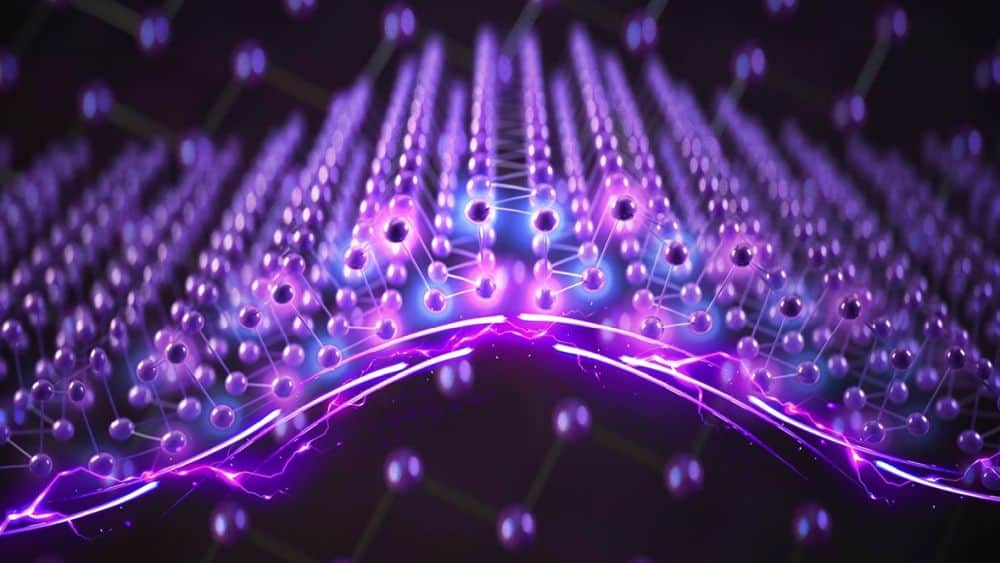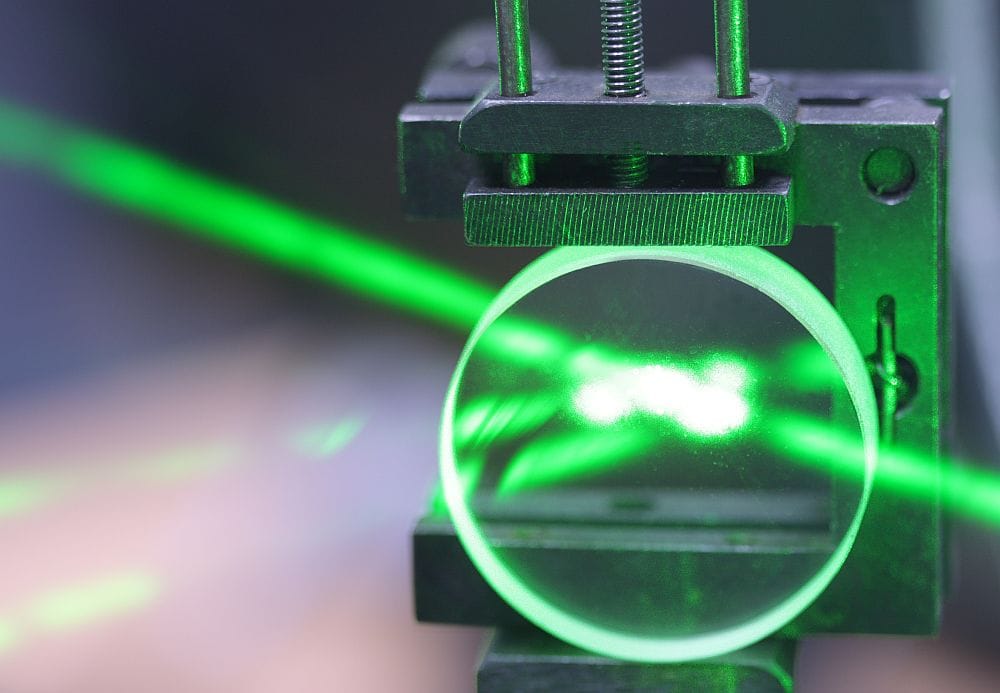
[Image above] Illustration of monolayer α-phase bismuth containing positively and negatively charged ions that switch polarity with each other as the domain wall moves. Credit: National University of Singapore
Just because something has not been seen before doesn’t mean it cannot be witnessed. However, once a previously unexpected phenomenon is observed, established theories regarding the topic may need to be modified or upended entirely.
For scientists who study the electrical properties of materials, several studies published this past month reported novel observations that may significantly impact the field. One paper, which featured on CTT this Tuesday, announced the first-ever observation of the piezoelectric effect in liquids. Today, we feature another open-access paper that describes the discovery of ferroelectricity in an elementary substance.
Ferroelectricity is the property of certain materials to exhibit spontaneous electric polarization that can be reversed through application of an external electric field. In the 100+ years since ferroelectric materials were first reported, these materials have found application in research areas such as renewable energy, microelectromechanical systems, and optical devices.
Ferroelectricity occurs due to the movement of positively and negatively charged ions within a unit cell, which leads to the creation of electric dipole moments.
Researchers traditionally assumed such electron redistribution could only be achieved in compounds. They expected atoms in the unit cells of an elementary substance (i.e., material consisting of a single element) to be identical, and so would not spontaneously form dipole moments.
In the past decade, some theoretical works (such as here, here, and here) suggested that ferroelectricity is possible in certain elementary substances. Specifically, the elements situated between metals and insulators in the periodic table, such as silicon and tellurium, show flexible bonding abilities. This ability allows them to have both positively and negatively charged ions in a unit cell—a basic feature for achieving ferroelectricity.
In 2018, a group of researchers from China, Singapore, and the United States used first-principles calculations to predict that monolayers of arsenic, antimony, and bismuth in the anisotropic α-phase structure could achieve in-plane ferroelectric polarization. Now, some of those researchers led the new open-access study that experimentally confirmed ferroelectricity in monolayer α-phase bismuth.
Their experiment involved growing monolayer α-phase bismuth on highly oriented pyrolytic graphite. Noncontact atomic force microscopy measurements confirmed the bismuth’s structure, namely that it had two different states in two neighboring domains separated by a domain wall.
Based on this knowledge of the structure, along with measurements from scanning tunnelling spectroscopy and Kelvin probe force microscopy, the researchers concluded that in-plane polarization could be confirmed.
In a National University of Singapore press release, senior author and NUS professor Andrew Wee says that, in addition to overturning the assumption that ferroelectricity only exists in compounds, “we believe that single-element ferroelectricity in [monolayer α-phase bismuth] would introduce a new perspective to the study and design of novel ferroelectric materials, and inspire new physics of elemental materials in the future.”
The open-access paper, published in Nature, is “Two-dimensional ferroelectricity in a single-element bismuth monolayer” (DOI: 10.1038/s41586-023-05848-5).
Author
Lisa McDonald
CTT Categories
- Basic Science
- Material Innovations
- Nanomaterials


